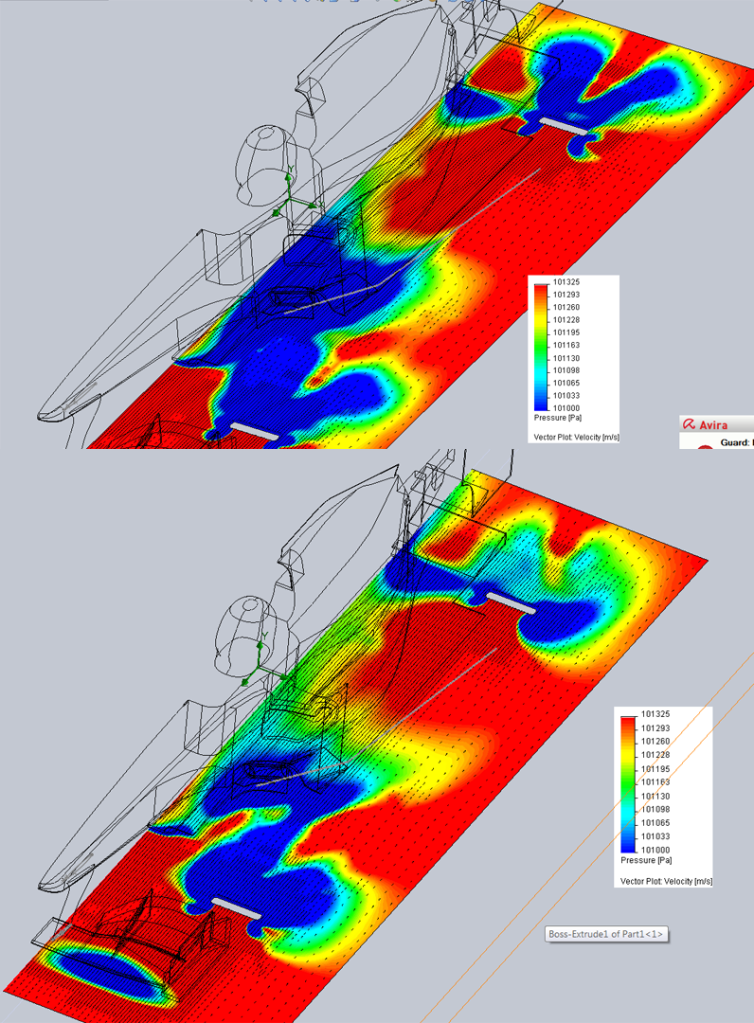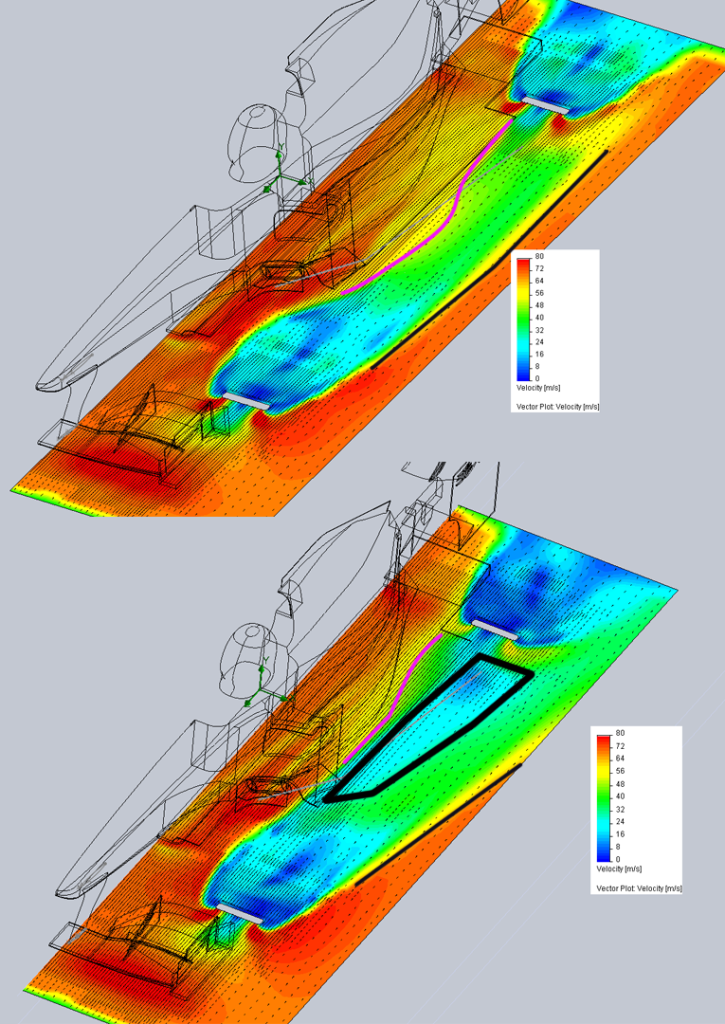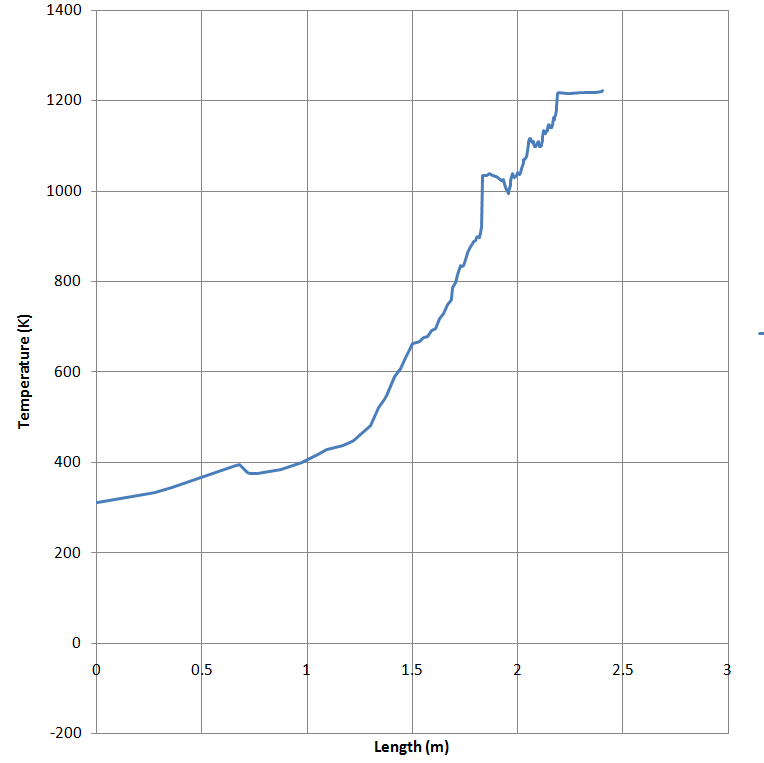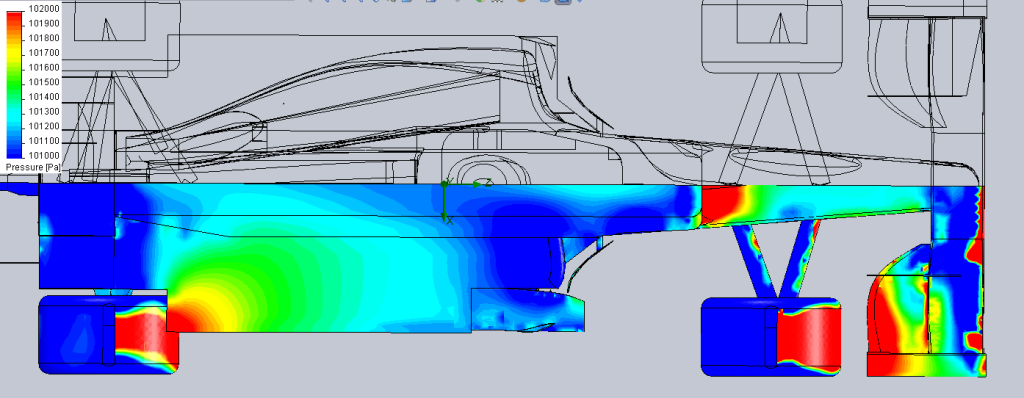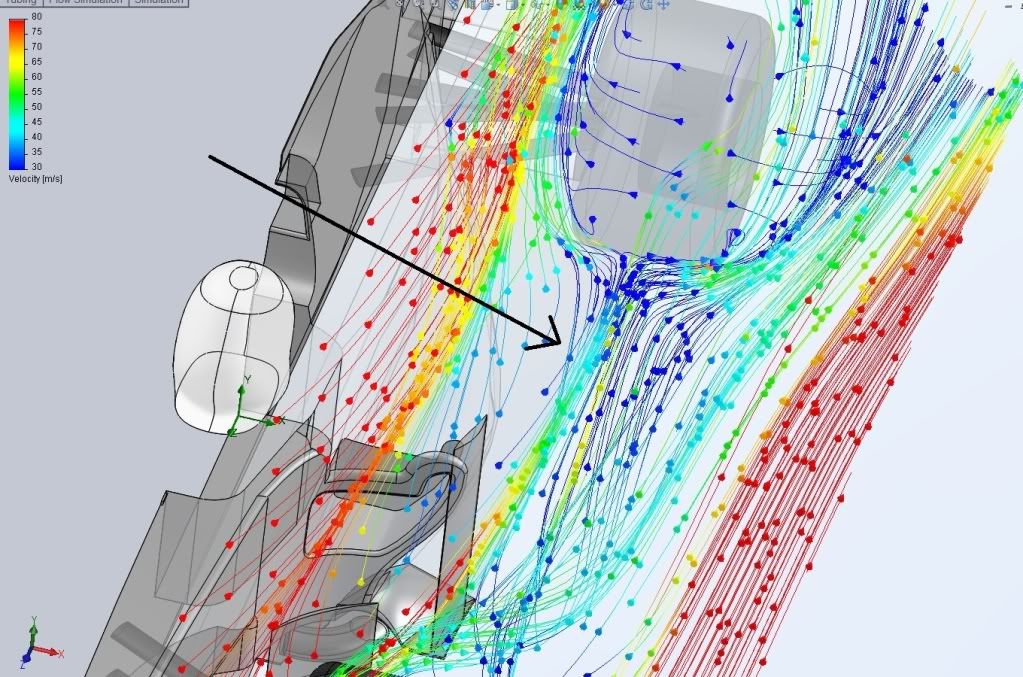Actually, it's not similar at all.
If you look at the Honda plot, you can even see that lone streamline that almost makes it to the edge of the floor, and then curves back in, without the aid of the tire. All of the streamlines, with the exception of the ones that crash into the tire, follow a nice curve that looks like the side of an ellipse... whereas yours look like straight lines that suddenly curve when they approach the tire.
Something's different with your CFD. Not sure if it is detail in the splitter, or if the exhaust is what is causing this effect...
Did you try any runs with no exhaust shooting out? What did those plots look like? I'd like to see how they match up to the Honda and USF1 ones.
- Login or Register
No account yet? Sign up



